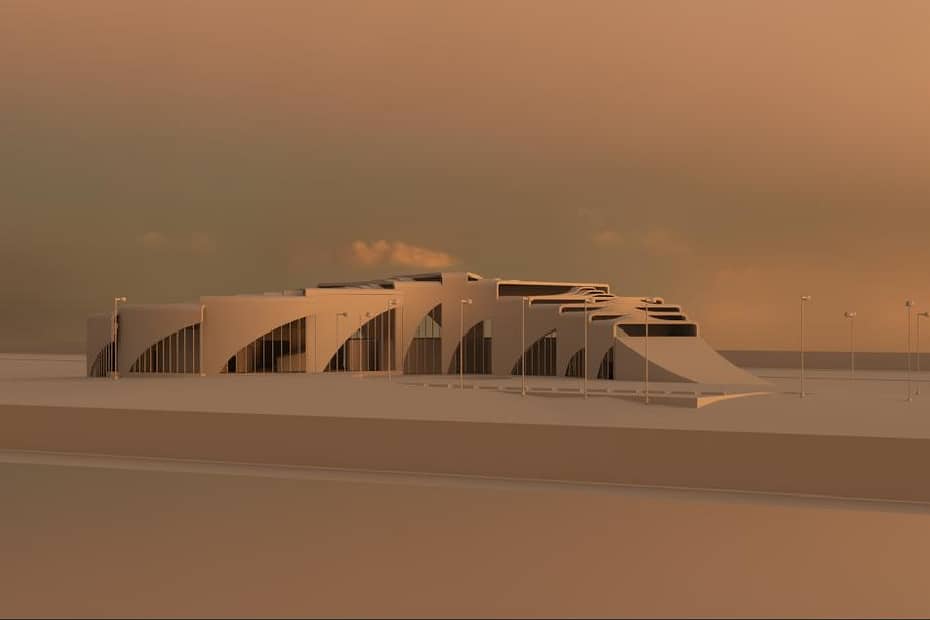Although the majority of the world’s architecture may prioritize function first,
However, great architecture blends with form to create spaces that are not only functional but also visually attractive.
Art is something that allows people to tell a story, and art also reflects the artist’s creativity and imagination.
Good architecture does the same thing but must also meet the basic requirements of an efficient and safe building.
The challenge for all architects is to create functional art.

Form follows function
Architect Louis Sullivan is famous for coining the phrase “form follows function.”
Which means that the purpose of the building should be the starting point and the appearance of the building follows as a secondary consideration.
Many architects in later years have treated this as a golden rule.
Although we have good intentions, we believe it is equally important to consider the aesthetics of the building, along with function.
Materials that pay tribute to local industries, the dominant colors of the area,
or even regional tree species also help create a connection between the structure and the community it serves.
While it is certainly important that the building functions well, and meets the needs of the client and the occupant in this regard,
All it takes is a little creative thinking to find areas where we have the opportunity to create art within the overall design of the building.
Practical needs such as windows, lighting, and finishes can be opportunities for the designer to create something beautiful.

Sharing architecture with art
Architecture has always shared a blurred line with art.
It may not be as pure an art form as sculpture, but in addition to being an occupyable space, it still needs to inspire and make an emotional impact.
If the architecture does not support the needs of the building, then the art is clearly separated from the architecture itself.
In addition to the sculptural quality of the building, many types of facilities placed importance on art.
For example, all hospitals have art programs, which is a device to help people connect with nature.
While art has the added dimension of helping people relax and focus when they are sick.

الفن الإضافي والمتكامل
هناك طريقتان لخلق فرص للتعايش بين الفن والهندسة المعمارية في المشروع.
الأولى هي الفن الإضافي، مما يعني أن العمل الفني يأتي بعد الانتهاء من المشروع.
من الأفضل القيام بذلك خلال مراحل التخطيط، حيث يمكن للعميل إحضار مستشار فني لمناقشة فرص إضافة الفن إلى المساحة.
الجدران الفارغة لتعليق اللوحات القماشية، والمساحات المقببة للمنحوتات أو تجهيزات الإضاءة المميزة، أو حتى الجدران الخارجية التي قد تكون رائعة للجداريات هي مجرد أمثلة قليلة.
في هذا التكتيك، تخلق الهندسة المعمارية مساحة للفن.

Artists are used to knowing “what walls they can put up.”
However, more artists are now starting to talk about things like the size of the space, how it fits into the art, the sound of people walking through the space, and how it will connect with people.
They understand how people move physically and emotionally through space, consider certain scenarios, or look for distractions while waiting.
The second method is an integrated approach.
This should definitely be done during the early stages, because art is part of the architecture itself.
For example, in the parking structure at the Martin Luther King Jr. Medical Campus in Willowbrook, California, an artist was hired to do an installation that was the main feature of the facade.
Thousands of painted aluminum panels speak to history and community, while also creating a standard for public art on campus.
In the best project, architecture can support art and vice versa.
Looking forward to the future
Looking to the future, the impact that technology and art will have on the architectural profession holds endless potential. Virtual Reality (VR) and Augmented Reality (AR) open the door to creating an artistic experience in spaces that may not otherwise be able to house art.
More on INJ Architects:


Comments are closed.